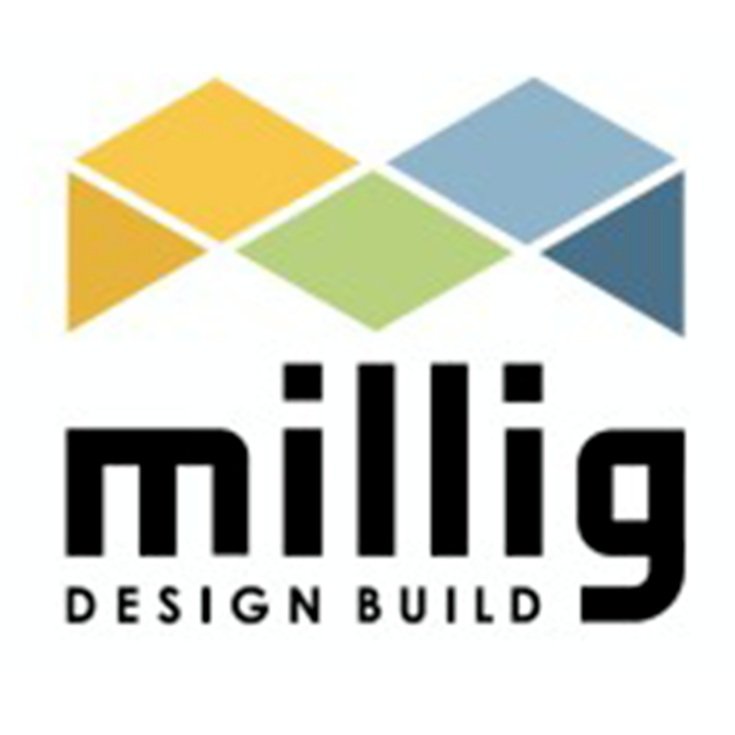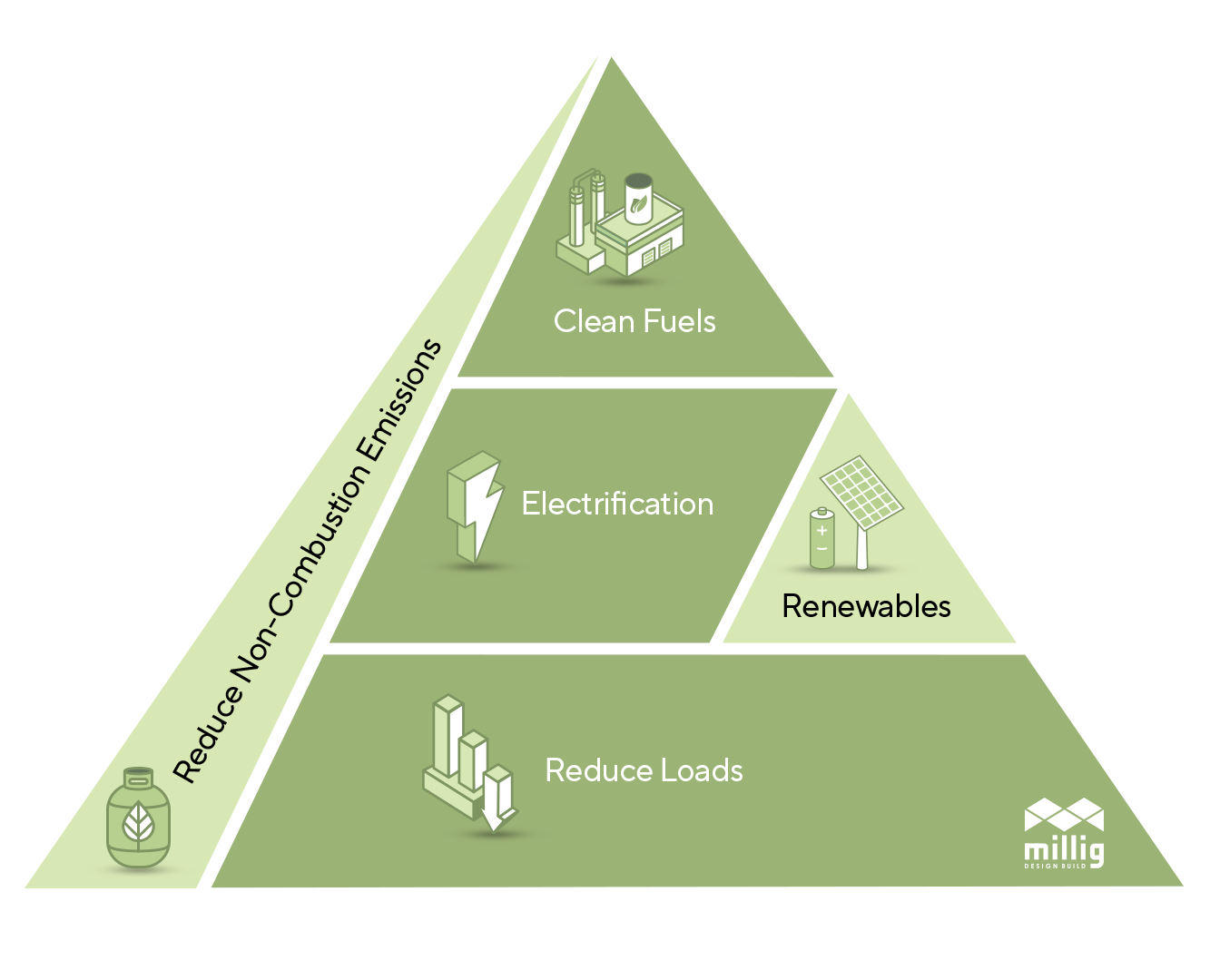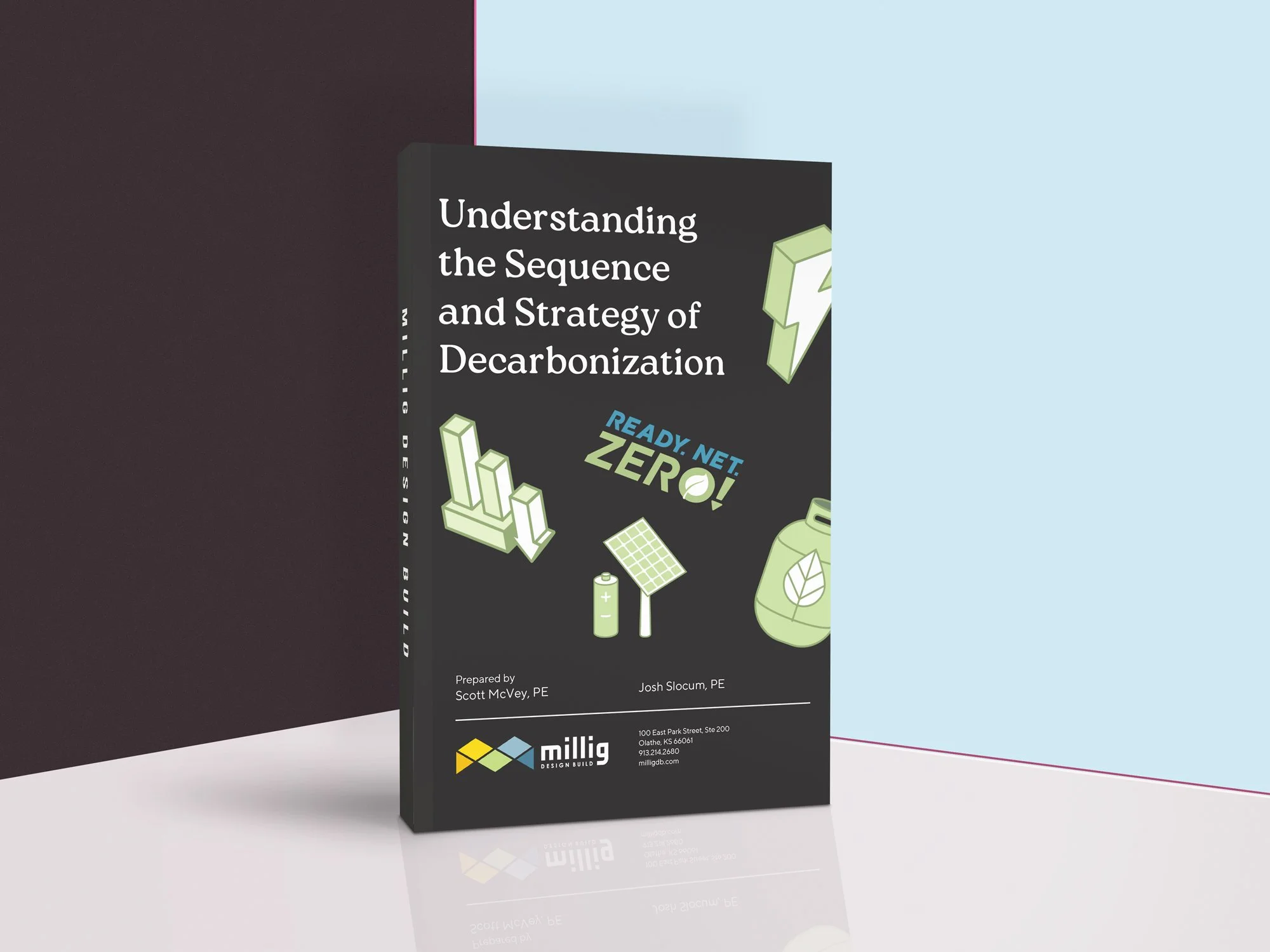Building Decarbonization

Millig makes decarbonization work for you.
When you work with Millig Design Build, you get a comprehensive and actionable building decarbonization strategy and a team with the know-how to execute it in a way that meets your objectives without disrupting the work your building has to do.
How We Approach Building Decarbonization
-
A successful decarbonization strategy is structured around interdependent steps that start with energy load reduction.
This is because retrofitting facilities to be more energy efficient lowers operating costs and greatly reduces the burden on the later, more costly decarbonization steps needed to eliminate greenhouse gas emissions, such as electrification and renewable energy systems.
When implementing load reduction strategies, the Millig Design Build team plans reduction measures in coordination with cogeneration and renewables sizing for maximum emissions reductions.
-
Energy efficiency improvements reduce operating costs and carbon emissions, but these improvements alone cannot move you to a Net Zero carbon future.
To achieve deep decarbonization, the Millig Design Build team will help you transition from fuel-fired, combustion-based systems to renewable energy through load electrification.
Building electrification is important because decarbonization requires a transition to renewables and that can only be achieved with electrical loads.
-
The majority of the world’s power is generated by massive centralized fossil fuel plants. Combustion of these fossil fuels produces 83% of global CO₂ emissions. Reaching Net Zero carbon emissions will take singular unity and technical innovation across all sectors.
As the world works together to scale renewable energy availability, organizations can speed the transition by embracing available distributed energy generation opportunities like on-site Solar Photovoltaics (PV), small-scale wind power, heat-recovery, (and, in some cases, hydrogen electrolysis to store excess power).
Doing so has benefits beyond lowering greenhouse gas emissions, including increased energy reliability and savings.
-
Employing a combination of energy efficiency and renewable energy to eliminate 100 percent of carbon emissions isn’t always achievable. For all remaining fossil fuel requirements, including gas used in cogeneration, the Millig Design Build team can help you supplement with clean fuels.
-
Non-combustion emissions commonly come from refrigerants and other working fluids in heat pumps, air conditioners, and chillers.
The Millig Design Build team will help you reduce these powerful contributors to greenhouse gasses through consideration of refrigerant type; and when making decisions on the purchase, operation, design, installation, maintenance, and replacement of systems.

Why Decarbonize with Millig Design Build?
We utilize advanced facility energy modeling to create a three-dimensional computer simulation of your facility’s hourly energy use. This model incorporates actual construction, process equipment, system types, and operational characteristics and is closely calibrated to your facility’s actual utility data to validate accuracy.
We provide an actionable roadmap for the implementation of building decarbonization strategies. This approach goes far beyond the level of analysis typically provided by consulting firms in ‘energy audits.’
We identify practical solutions that are vetted for constructability and we can immediately design and construct our recommendations in a turnkey fashion.
In addition to carbon emissions reduction, we consider the invasiveness of each measure and work to minimize the effect each measure has on the job your facility has to do.



